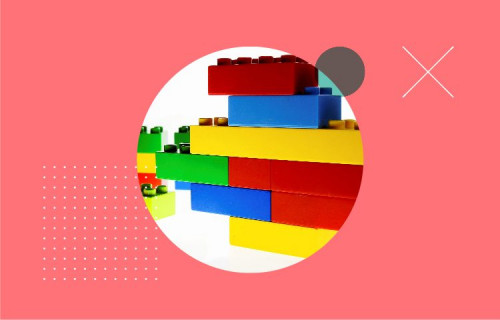
What are the latest developments in low-code? - Gartners Magic Quadrant
IT professionals are experiencing increasing challenges around application delivery due to developer and skills shortages. In its 2020 Magic Quadrant for Enterprise Low-code Application Platform report, Gartner compares 19 different Low-Code Application Platforms (LCAPs). These LCAPs can help make application development smoother. Want to know what Low-code means and what the main trends and developers are in the field of LCAPs? Then read on quickly!
What is low-code?
Firstly, Low-code is the modern approach to developing, deploying and managing applications. You can characterize a Low-Code Application Platform (LCAP) by the use of model-driven or visual drag-and-drop components. These components free non-technical developers from the need to write code. Develop a new application from scratch in a fraction of the time? Or create a faster, more intelligent version of an existing application? A Low-Code Application Platform makes it possible for all developers of different experience levels to easily and quickly create custom applications for web and mobile.
What can you use an LCAP for?
So what can you use a low-code application platform for? There are three different use cases:
Citizen Development
Building line-of-business, web-based, data-oriented applications. Even “ordinary citizens” can develop business applications using no-code.
Business Unit IT Application
Building new enterprise applications involving web, mobile, data, business logic and external services, including Software as a Service (SaaS).
IT business process application
Automating long-running, changeable and complex business processes. Think workflows and case management with advanced business logic, external services and multiple end-user roles.
As you can see, an LCAP offers a lot of added value. As a result, Gartner expects that by 2023, more than 50% of medium to large enterprises will have adopted an LCAP.
Conclusions Gartner Magic Quadrant
Gartner’s Magic Quadrant maps the market for IT solutions.
The Magic Quadrant shows the ‘completeness of vision’ on the horizontal axis and on the vertical axis the ‘ability to execute. To complete the quadrant, Gartner compares 18 LCAP developers on the following 4 points:
- Strengths
- Threats
- Execution of marketing
- Process and business logic
You can read the main conclusions and visible trends that came out of this research below.
What does the low-code market look like?
- The market for low-code application platforms (LCAPs) continues to grow. Gartner customers have a strong interest in low-code for both application development and integration and AI services.
- Large SaaS vendors, such as Salesforce and Microsoft, dominate the market, while their SaaS competitors, such as ServiceNow, are introducing new LCAP applications.
- The overlap with Business Process Automation vendors continues to grow. This is reflected in the addition of AuraQuantic and Newgen to the LCAP Magic Quadrant for 2020.
- Of the major vendors in the application infrastructure and middleware services (AIMS) market, Salesforce has achieved the #2 status in revenue. This is primarily based on its Salesforce Platform LCAP. At No. 1 is IBM.
- Salesforce represents a large portion of LCAP market revenue. Oracle’s number 3 status in AIMS is supported by its two independent LCAP offerings that receive individual attention for this edition of the Magic Quadrant.
- At number 4 is AWS, which recently introduced a beta version of its LCAP offering, Amazon Honey code. Microsoft at number 5 has Power Apps as its LCAP, a key part of its Power Platform strategy.
- SAP and IBM both offer Mendix on their marketplaces.
- The dangers of low-code lock-in have been demonstrated by Google canceling its App Maker product and acquiring the completely separate and incompatible AppSheet.
What are the trends within low-code?
- The intelligent integration of AI/ML (AI-driven application development) and IoT applications.
- Robotic Process Automation (RPA) enablement, automating repetitive, time-consuming operations.
- Even more focus on no-code instead of low-code, eliminating coding for application development.
Who are the leaders and visionary players within the LCAP market?
Leaders
- large cloud SaaS providers (Microsoft, Salesforce, Service-Now)
- specialized low-code providers (Mendix, OutSystems)
- a hybrid process automation and low-code application vendor (Appian)
Visionaries
- a citizen development vendor (Betty Blocks)
- a hybrid process automation and low-code application vendor (Pega)
Want to know more about low-code?
Are you wondering what a low-code solution can do for you? Watch our webinar here to find out!

Webinar: Digital Customer Experience made Easy
What opportunities could you grasp if you could create digital experiences for your customers just in weeks? Customer self-service portals, mobile apps, or agent portals that run on any device. It’s all possible within weeks with our low code webinar.

What are the latest developments in low-code? - Gartners Magic Quadrant 2020
IT professionals are experiencing increasing challenges around application delivery due to developer and skills shortages. In its Magic Quadrant for Enterprise Low-Code Application Platform report, Gartner compares 19 different Low-code Application Platforms (LCAPs) that can contribute to smoother application development. In this blog, you’ll read about what low-code entails and what the key trends and developers are in the field of LCAPs.

Stop customer churn with data science
There is one thing that’s just as important as finding new clients: keeping your current clients. This one-pager will give you some practical tips to increase your loyal customer group by making use of the science of data!
